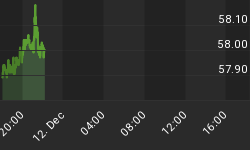With volatility at consistently low levels, more investors are revising their strategies on risk. Apparently these is no downside risk anymore as Investors Abandon Hedges.

After a long stretch of stock market tranquility, more investors are concluding that paying for hedges to protect against any sudden downturn is a waste of money. The S&P 500 jumped 19% in 2017, and the Cboe Volatility Index, known as the VIX, had its quietest year in history. That meant investors who bought such options were often stuck with worthless contracts.
More investors are concluding that during an extended period of low volatility, paying for insurance against wild price swings is a luxury they can no longer afford. Purchasing market protection eats into returns. Already squeezed by competition from passive investments like exchange-traded funds, active managers these days feel they can’t risk falling behind in a rally.
Some data indicates that either demand for protection is low or investors are favoring bullish options on the S&P 500 instead. A measure called skew, gauging the cost of insuring against short-term stock declines, has been near a one-year low, data from Credit Suisse Group AG showed in a December report.
“I haven’t seen hedging activity this light since the end of the financial crisis,” said Peter Cecchini, the New York-based chief market strategist at Cantor Fitzgerald. “It started in late 2016 and accelerated in the second half of the year.”
Sum of Vix Closes Under 10
Blow-Off Top Beginning or Near the End?
Add the above chart to the list of items that suggest the blow-off top is in the very late, not early stages.
For further discussion, please see Hussman Questions Grantham's "Melt-Up" Thesis.
By Mike Shedlock
















